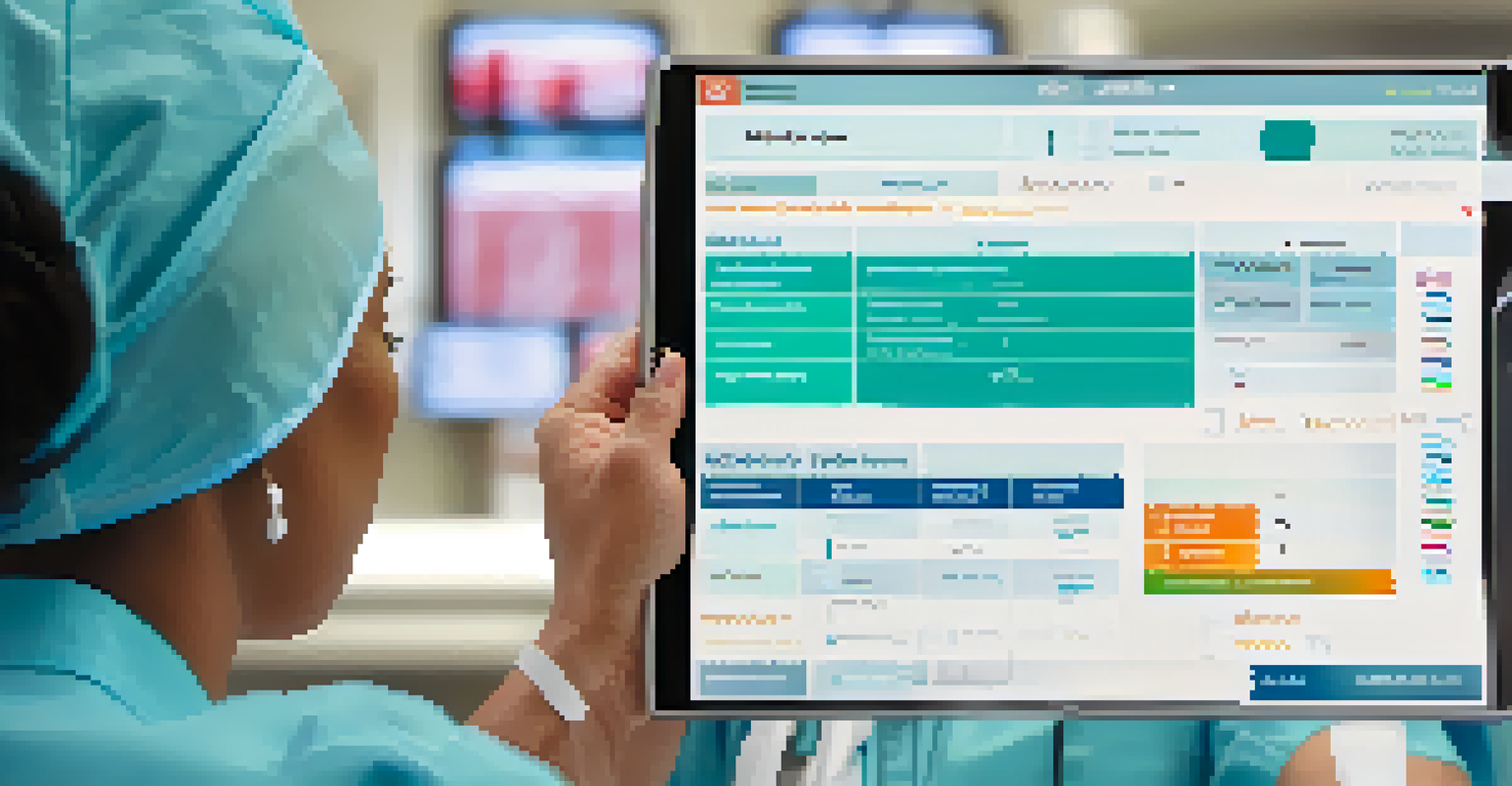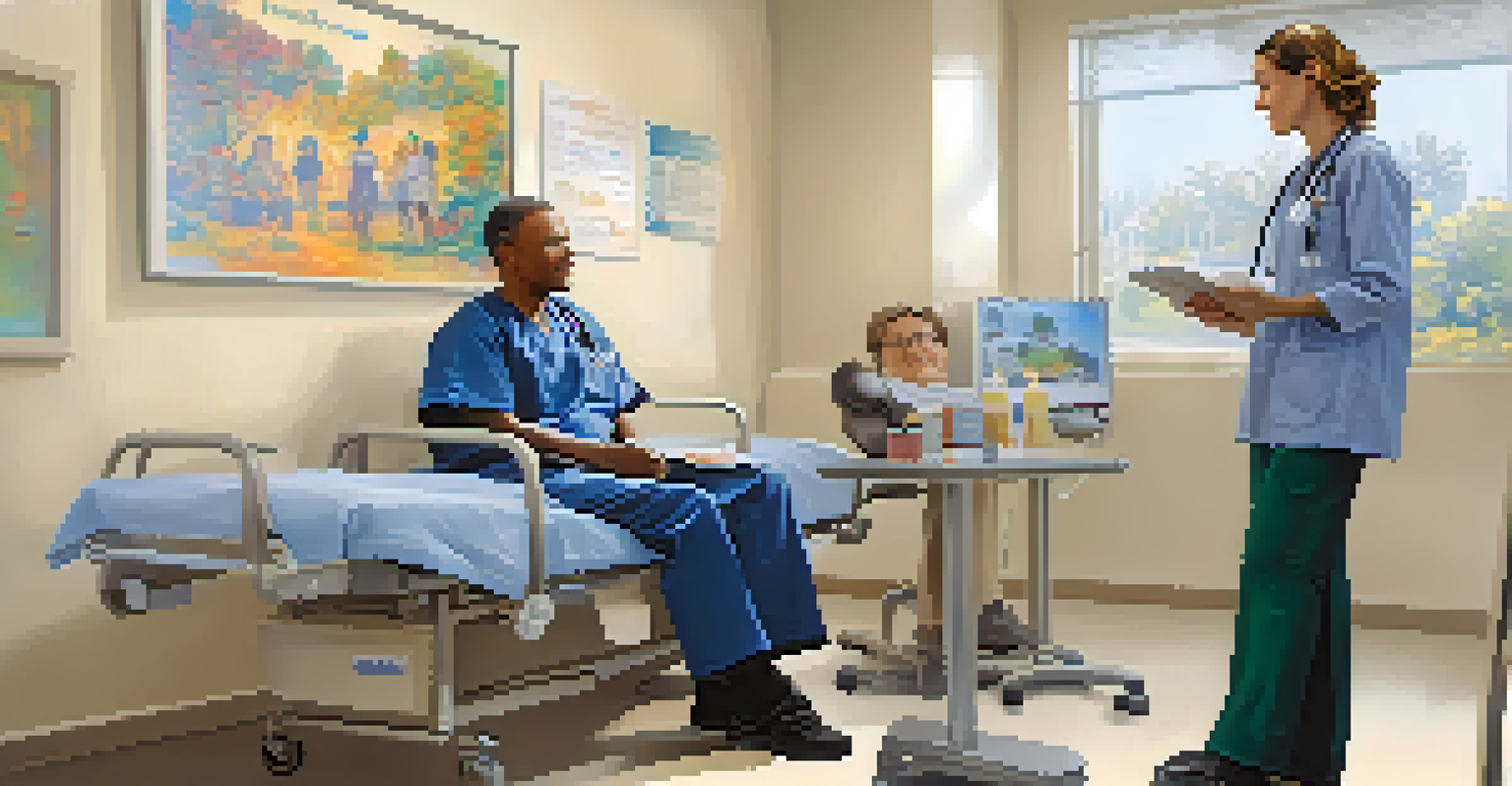The Importance of Communication in Patient Safety Initiatives

Understanding Patient Safety and Its Challenges
Patient safety refers to the prevention of harm to patients during healthcare. Despite advancements in medicine, errors still occur, often due to miscommunication. These challenges can lead to serious consequences, underscoring the need for effective communication strategies.
The single biggest problem in communication is the illusion that it has taken place.
In a fast-paced healthcare environment, teams may overlook critical information. For instance, a nurse might misinterpret a doctor's order, potentially affecting patient care. This highlights how crucial it is for all members of a healthcare team to be on the same page.
By recognizing the challenges in patient safety, we can better appreciate the role of communication. It’s not just about talking; it’s about ensuring everyone involved understands and processes information correctly.
How Clear Communication Reduces Errors
Clear communication can significantly reduce the risk of medical errors. When healthcare providers share information effectively, they create a safer environment for patients. For example, using standardized communication tools like SBAR (Situation, Background, Assessment, Recommendation) can streamline information sharing.

Imagine a scenario where a patient’s medication history is accurately communicated during a handoff between shifts. This clarity helps prevent adverse drug reactions, showcasing how proper communication can directly enhance patient safety.
Communication Enhances Patient Safety
Effective communication among healthcare providers is crucial for preventing errors and ensuring patient safety.
Ultimately, fostering clear communication among medical staff not only minimizes errors but also builds trust. When patients feel heard and understood, their likelihood of adhering to treatment plans increases, improving their overall health outcomes.
The Impact of Teamwork on Patient Safety
Effective teamwork is essential in healthcare settings, particularly for patient safety. When team members communicate openly, they can collaborate to address potential risks. For instance, regular team meetings can serve as platforms for discussing safety concerns and sharing best practices.
Effective communication is the key to unlocking the door to patient safety.
Consider a surgical team preparing for an operation. By discussing each member's role and confirming the surgical plan, they minimize the chances of mistakes. This collaborative approach not only enhances safety but also improves team morale.
Encouraging a culture of teamwork and communication can lead to better patient outcomes. When healthcare professionals work together seamlessly, they create a more cohesive and vigilant environment for patient care.
The Role of Technology in Communication
Technology plays a crucial role in enhancing communication within healthcare. Electronic health records (EHRs) allow for real-time updates, ensuring that everyone has access to the latest patient information. This reduces the chances of miscommunication that can arise from relying solely on verbal exchanges.
For example, using secure messaging apps can facilitate quick communication among healthcare providers. This immediacy allows teams to respond promptly to emerging issues, which can be vital for patient safety.
Teamwork is Key to Safety
Open communication and collaboration among healthcare team members significantly reduce risks and improve patient outcomes.
However, it’s important to balance technology with personal interactions. While tools can enhance communication, they shouldn't replace the human element that is vital in patient care.
Engaging Patients in Their Own Care
Engaging patients in their own care is a vital aspect of communication. When patients are informed and involved, they become active participants in their treatment. This collaboration fosters a sense of ownership and encourages adherence to medical advice.
For instance, educating patients about their conditions and treatment options can lead to better decision-making. When patients understand what’s at stake, they are more likely to ask questions and communicate concerns, further enhancing safety.
By prioritizing patient engagement, healthcare providers can create a partnership that significantly reduces risks. This not only improves outcomes but also cultivates trust between patients and providers.
Training Staff on Effective Communication Techniques
Training healthcare staff on effective communication techniques is essential for patient safety. Workshops and simulations can help team members practice clear and concise communication. These training sessions can also focus on crucial topics like active listening and conflict resolution.
For example, role-playing scenarios can prepare staff for high-pressure situations where clear communication is vital. By practicing these skills, healthcare professionals can feel more confident in their interactions with colleagues and patients.
Technology Supports Clear Communication
Utilizing technology like electronic health records can enhance communication but should be balanced with personal interactions.
Investing in communication training ultimately leads to a safer environment for patients. It equips staff with the tools they need to convey critical information effectively and collaboratively.
Measuring the Impact of Communication on Safety
Measuring the impact of communication on patient safety initiatives is crucial for improvement. Metrics such as incident reports, patient feedback, and staff surveys can provide valuable insights. By analyzing these metrics, healthcare organizations can identify areas for enhancement.
For instance, if a pattern of communication-related errors emerges, it signals a need for targeted interventions. This data-driven approach helps organizations refine their practices and prioritize effective communication as a cornerstone of safety.

Ultimately, evaluating communication efforts not only improves safety but also enhances the overall quality of care. Organizations that prioritize measurement and feedback are better positioned to create a culture of safety.
Fostering a Culture of Open Communication
Fostering a culture of open communication is vital for sustaining patient safety initiatives. When healthcare professionals feel safe to voice their concerns, it encourages a proactive approach to safety. This transparency can lead to early identification of potential risks.
For example, a hospital that encourages reporting near-miss incidents can learn from these experiences. By analyzing what went wrong, teams can implement changes to prevent future occurrences, enhancing overall safety.
Creating an environment where everyone feels empowered to speak up not only improves patient safety but also contributes to a positive workplace culture. Ultimately, it’s about building trust and accountability among all team members.